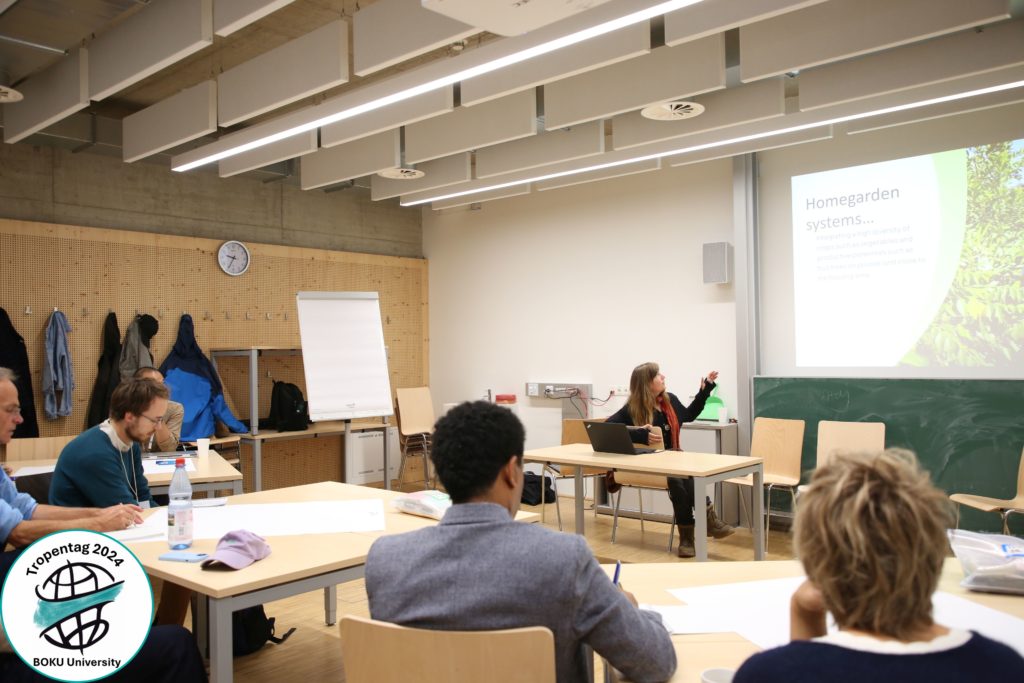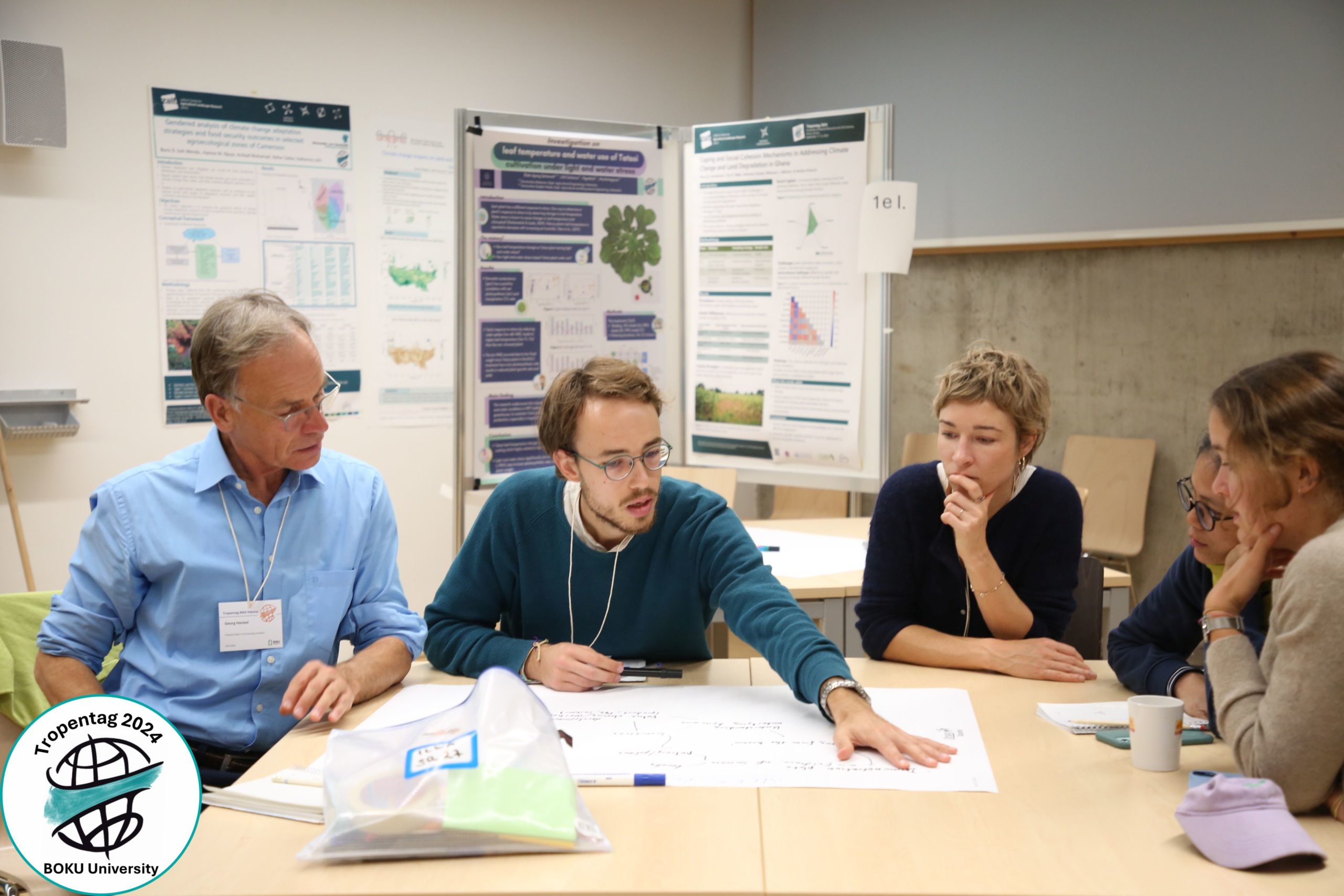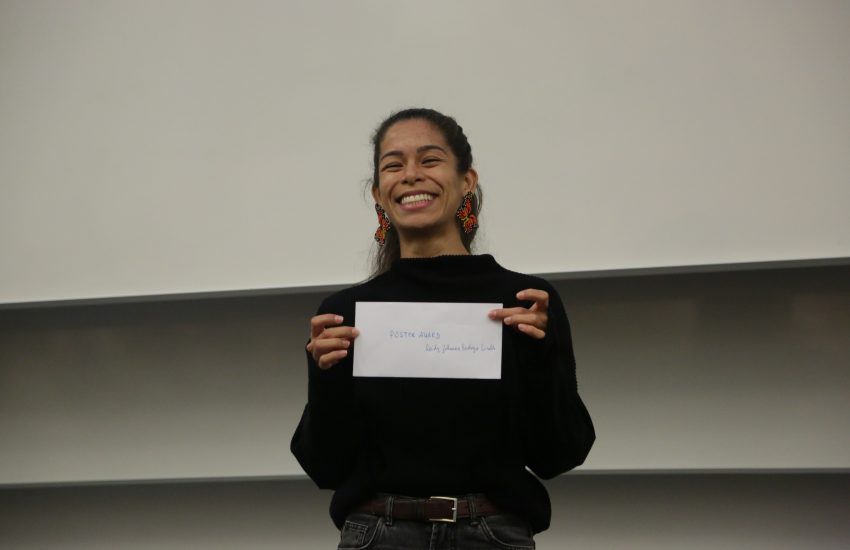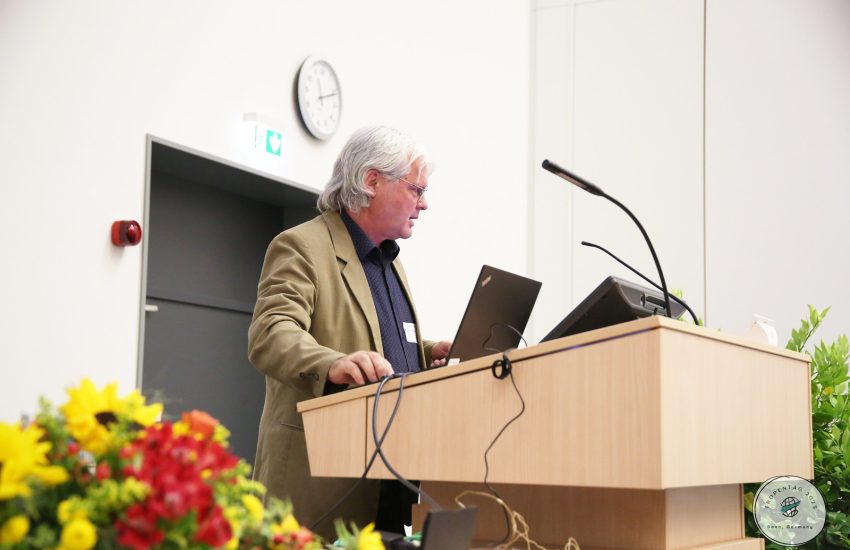Approaches to upscaling agroforestry
The final day of Tropentag 2024 started with a workshop on the topic of “Upscaling Agroforestry in the Tropics” led by Lilian Beck, a PhD researcher from the University of Hohenheim and the Center for International Forestry Research and World Agroforestry (CIFOR-ICRAF). The workshop featured interactive reflections on agroforestry practices, case studies and recommendations to advance these practices.
Understanding Agroforestry
Agroforestry, as defined by the USDA Agroforestry Strategic Framework, is “the intentional integration of trees and shrubs into crop and animal farming systems to create environmental, economic, and social benefits.” (USDA Agroforestry Strategic Framework: Fiscal Year 2019-2024. (n.d.). https://www.usda.gov/topics/forestry/agroforestry) While it shares some similarities with agroecology, which also focuses on agroecosystems, agroforestry is specifically concerned with integrating trees among crops or pastures.
Types of Agroforestry Practices
The workshop highlighted key agroforestry systems on their structural basis:

- Agrisilviculture systems: Integrating crops into forests and typically on communal land
- Homegarden system: Integrating a high diversity of crops such as vegetables and productive perennials such as fruit trees on private land close to housing areas.
- Silvopastoral: Integrates or preserves trees in pastoral landscape for example for fodder or shatter
- Alley cropping/intercropping : Intercropping trees with crops in alley alignment
- Boundary planting: trees growing on farm boundaries for erosion prevention and firewood
- Agrosilvopastoral system: integrating trees, livestock and crops
Case Studies: Agroforestry in Cambodia and Sub-Saharan Africa
The workshop provided two case studies of agroforestry practices in Cambodia and Sub-Saharan Africa to illustrate different agroforestry systems.
In Cambodia there are mainly two systems: agrisilvicultural system and homegardening. Agrisilvicultural systems integrate crops like cacao, coffee, or timber trees into communal or forest lands. These systems often facilitate communal land rights and enhance local biodiversity. Homegardens, on the other hand, are highly diversified, combining fruit trees with annual and biannual crops to support family food security and income.
In Sub-Saharan Africa the silvopastoral system is the most prevalent, which prioritizes livestock while integrating and preserving trees. This system can involve privately owned land and sometimes nomadic pastoral systems, adding a layer of complexity in terms of politics and management among pastoralists. The silvopastoral system further provides benefits such as fodder and ecosystem services like shade and erosion prevention. However, it can face significant challenges, including land loss due to evictions, insecurity, conflict, and threats from bandits. The mobility of pastoralists is often compromised, and there is a risk of overexploiting specific tree species.
Another method used in Sub-Saharan regions is alley cropping, which relies on heavy machinery and differs from the more diversified home garden system. Alley cropping typically involves intercropping different species of trees. This system enhances ecosystem services and focuses on additional production, with main crops like wheat and rice grown in the alleys where sunlight is sufficient, being oriented towards income generation and cash crops.
Advancing Agroforestry Practices
The final segment of the workshop was based on strategies to boost the adoption of agroforestry practices. The main recommendations were the following:
- Introducing fruit trees and fast yielding annuals to diversify agricultural outputs and enhance economic benefits.
- Analyzing and incorporating plant species that resonate with the cultural and practical needs of farmers to improve relevance and acceptance.
- Emphasizing crops with high nutritional value to address dietary needs, while planting fodder trees can support livestock rearing.
- Encouraging communal development efforts and pooling resources for investing in trees and agricultural diversification to strengthen local economies.
- Empowering women through targeted training in home gardening to enhance household food security.
- Supporting women empowerment through including gender specific crop and tree choices such as Dawadawa tree.
- Forming cooperatives and unions to facilitate entry into agroforestry markets, and securing land tenure for both private and communal farming, alongside state support, can foster stability and growth.
- Exploring carbon credit funding opportunities for agroforestry projects can provide additional financial incentives and support environmental sustainability.

The workshop emphasized once again the critical role of integrating diverse agroforestry practices to enhance food security, biodiversity, and economic resilience in tropical regions. Through case studies and interactive discussions, it became clear that adopting a localized, inclusive approach—tailored to cultural and environmental contexts—can significantly advance agroforestry. By focusing on economic incentives, community involvement, and gender empowerment, alongside innovative funding mechanisms like carbon credits, agroforestry holds great promise for sustainable agricultural development.
Author: Anushka Mukherjee



